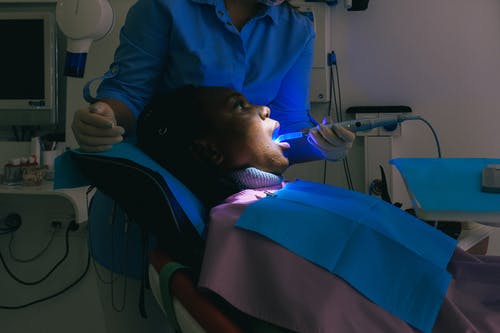5 Important Things to Know Before You Get a CEREC
Last Updated on May 25, 2021 by Duncan
When a patient’s tooth is damaged or threatened by a cavity, a dentist may recommend a dental crown to fix the problem. A crown is a cap used to encircle a tooth.
It can be made from several materials like ceramic, resin, porcelain, and resin. These days a CEREC crown is the more popular choice when it comes to dental crowns.
CEREC is short for Chairside Economical Restoration of Esthetic Ceramics. It is a computer-aided design and manufacturing system that allows dentists to eliminate the long process of designing, creating, and installing patients’ tooth crown.
Through this technology, patients can have their crowns fitted with a single trip to their dentist’s office. This convenience, among other benefits discussed later in this article, is why this type of crown has become popular.
Before you get a CEREC installed in your teeth, here are five important things to note.
How CEREC Works
It uses advanced computer technology, software, and a milling machine to design restorations that look very natural in as little as a few minutes. The steps taken for a crown to be installed in a patient’s tooth through this method can be broken down into seven.
- The dentist prepares the patient’s tooth for the restoration process
- The CEREC software, with the use of the embedded camera, takes a photo of the damaged area to be treated
- CEREC converts the image into a 3D model
- With specifications from the dentist, the final model is created
- The mill then carves a ceramic block precisely into the exact specifications of the patient’s restoration.
- The dentist inspects the restoration to confirm that it fits properly in the patient’s mouth.
- Finally, the restoration is bonded to the patient’s tooth.
Benefits of CEREC
- It saves time. Unlike the traditional method that could take up to three weeks to be completed, the CEREC method takes about two hours to complete.
- Dental crowns are not the only restorations that can be done using this technology. It is also used to install metal-free veneers, onlays, and inlays.
Veneer:
A veneer is a thin, custom-made material placed over a tooth to improve its looks and shape. Veneers are mostly made out of porcelain and compost.
Onlay: An onlay can be made out of porcelain, resin, and compost. It is meant to fix a tooth’s surface that has been damaged by injury or decay.
Inlay: An Inlay is fitted into the grooves of a tooth. This type of restoration is mostly used to treat cavities centered in the tooth. They are mostly made out of ceramic.
- Restorations made with this technology look very natural and are hard to tell apart from the rest of the teeth.
- Studies have shown that restoration done with this method is very durable and highly resistant to abrasion.
- CEREC restorations are metal-free. This is important because metal restorations can contain toxic material that can affect a patient’s health. Click here to learn more about tooth restoration.
- This method helps to preserve patients’ tooth structure as opposed to the traditional method, where bigger pieces of the tooth have to be broken off to get the shape.
- Many people do not like having to wear a temporary crown because it often breaks or becomes loose. With CEREC, no such discomfort is experienced.
- Availability and Cost
One downside to CEREC is that not so many dental hospitals have the technology. This is because it is expensive to purchase and maintain, making the cost of its restorations expensive. People searching for a dental hospital should consider looking them up on Google or their preferred search engine. For example, people in Roanoke can begin their search by simply typing Roanoke CEREC dental hospitals.
The cost of getting a CEREC crown can be between $500 and 1500 dollars per tooth. As a result, many dentists stick to the traditional method that most of their patients can afford. Also, for dentists to use this technology, they would have to go through extensive training, which can be very costly.
Insurance is another factor that can influence the cost of this type of restoration. Not all dental insurance covers this type of dental procedure, and most will only shoulder part of the cost. Whatever the case, it depends on if your insurance company deems the process medically necessary or just for aesthetics purposes.
Limited Choice of Materials
Patients’ choice of materials is minimal because of the process involved with this method. This technology mostly uses ceramic, unlike the traditional method that is done using ceramic, gold, porcelain, resin, zirconia, and a combination of other materials.
How to Take Care of the Teeth After Getting a CEREC Restoration
After the procedure, the crowned tooth may become sensitive. This feeling may take up to five days before it goes away. People whose sensitivity continues after five days should meet their dentist to recommend sensitivity toothpaste or a fluoride mouthwash.
Patients should avoid chewy or sticky food that may cling to the tooth. The standard practice of brushing twice daily for a minimum of two minutes and flossing once a day should not be compromised.
Ultimately, all oral hygiene should be maintained to keep healthier, better-looking teeth. It is best practice to visit the dentist every six months to check up on the crowned tooth.
Visit https://www.healthline.com/health/dental-and-oral-health/best-practices-for-healthy-teeth#3.-Dont-neglect-your-tongue for a better understanding of how to take care of the teeth.
Conclusion
CEREC is for people who can’t wait three weeks to get their restoration and can afford the cost of the technology. Aside from the convenience and other benefits listed in this article, this method is currently known to have no side effects. It is completely safe.

